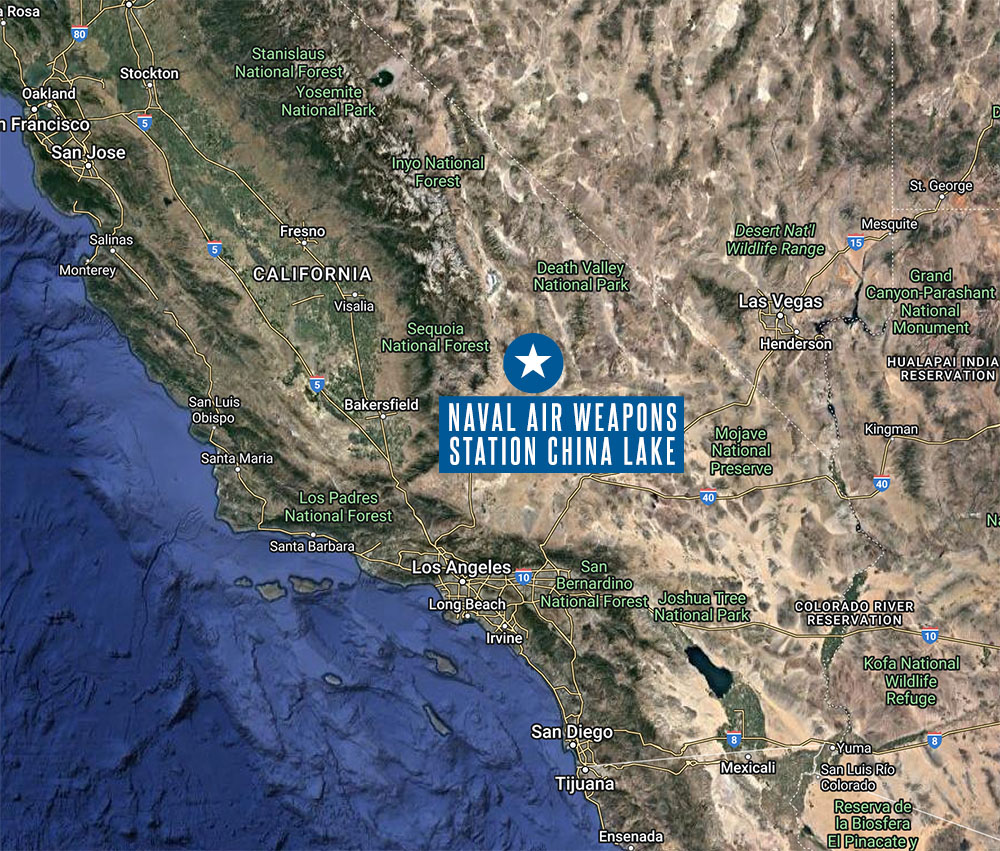Battery Testing and Installation… for a Military Installation
Ridgecrest, CA
Alamon performs a variety of professional DC Power Services for all kinds of projects, and one of the more interesting and successful ones recently took place at a military installation 150 miles north of Los Angeles in the Western Mojave Desert.
Naval Air Weapons Station China Lake sits 2,400 feet above sea level in California’s high desert. The Navy and Marine Corps have developed or tested nearly every significant airborne weapon system in the past five decades at this 1.1 million acre facility, which features over 20,000 square miles of controlled airspace.
As you might expect at a site where cutting edge weapons systems are tested and evaluated for the U.S. Department of Defense, communications is a high priority.
Enter Alamon. As a highly regarded DC Power Services provider, Alamon supplies annual battery inspections for NAWS China Lake, working through telecom contractor Dawson Communications.
Eight remote telecom buildings across the facility handle various communications tasks related to demolitions, radar, weaponry, security and more. Each is equipped with battery backups.
Following one of the regularly scheduled inspections that included conductance and heat tests, the batteries were approaching the end of their useful lifespan. Alamon’s Jason Holling reported back to the client with a recommendation to replace the batteries.
Following the bid review process, Alamon was awarded the battery replacement work and quickly got to work once the batteries were delivered.
 Holling explains, “the main site had 23 batteries at 465 lbs apiece, and there were two strings, so 46 batteries at that weight. And when you work in the high desert at the foot of the Sierra Nevada Mountains, you get every kind of adverse weather possible. It was hot. It was cold. It was windy. And when the wind blows there, it’s literally sandblasting your vehicle,” he said.
Holling explains, “the main site had 23 batteries at 465 lbs apiece, and there were two strings, so 46 batteries at that weight. And when you work in the high desert at the foot of the Sierra Nevada Mountains, you get every kind of adverse weather possible. It was hot. It was cold. It was windy. And when the wind blows there, it’s literally sandblasting your vehicle,” he said.
13 days later the project wrapped successfully, with all batteries replaced throughout the eight sites.
According to Holling, “the best testament to the quality of our work was that it was put to the test right away, and passed with flying colors.”
The last scheduled battery readings prior to the replacement project had revealed two months of battery life remaining. Holling had correctly ID’d the problem and the time frame.
Shortly after finishing the remote sites and installing one new string into the main site, there was a complete power outage on the base for six hours, caused by the entire grid in the nearby city of Ridgecrest going down.
How did the system perform? Perfectly.
“Everyone was very happy, and the base’s security crew was particularly pleased,” says Holling.
“Normally, during an outage they lose communications, and no communications means no security, so they have to lock the gates.”
Not this time. Even though the new system was still not 100 percent installed, all telecom sites stayed operational throughout the outage.
Why Choose Alamon?
“We have the people, the knowledge and the tools,” says Holling.
“This project went well because we had a testing schedule that kept us up-to-date with the status of the batteries. We could anticipate the trouble before it happened. We got ahead of it.”
Holling says if he could give one piece of advice for others, it would be to maintain a regular testing & inspection program for your DC power sites.
“VRLA (Valve-Regulated Lead-Acid) batteries need to be inspected and operated every three months, minimum. A lot of people don’t know what good battery maintenance requirements are. We always share this information with customers so they get the best life from their DC power investment.”
When you’re deciding which contractor to talk to about your DC power needs, talk to the company that provided top tier service for one of the Navy’s most important weapons testing facilities.
Tell me more about Alamon.
NAWS China Lake is the Navy’s largest single landholding, representing 85 percent of the Navy’s land for RDAT&E use and 38 percent of the Navy’s land holdings worldwide. In total, its two ranges and main site cover more than 1.1 million acres, an area larger than the state of Rhode Island (data courtesy https://cnrsw.cnic.navy.mil).



